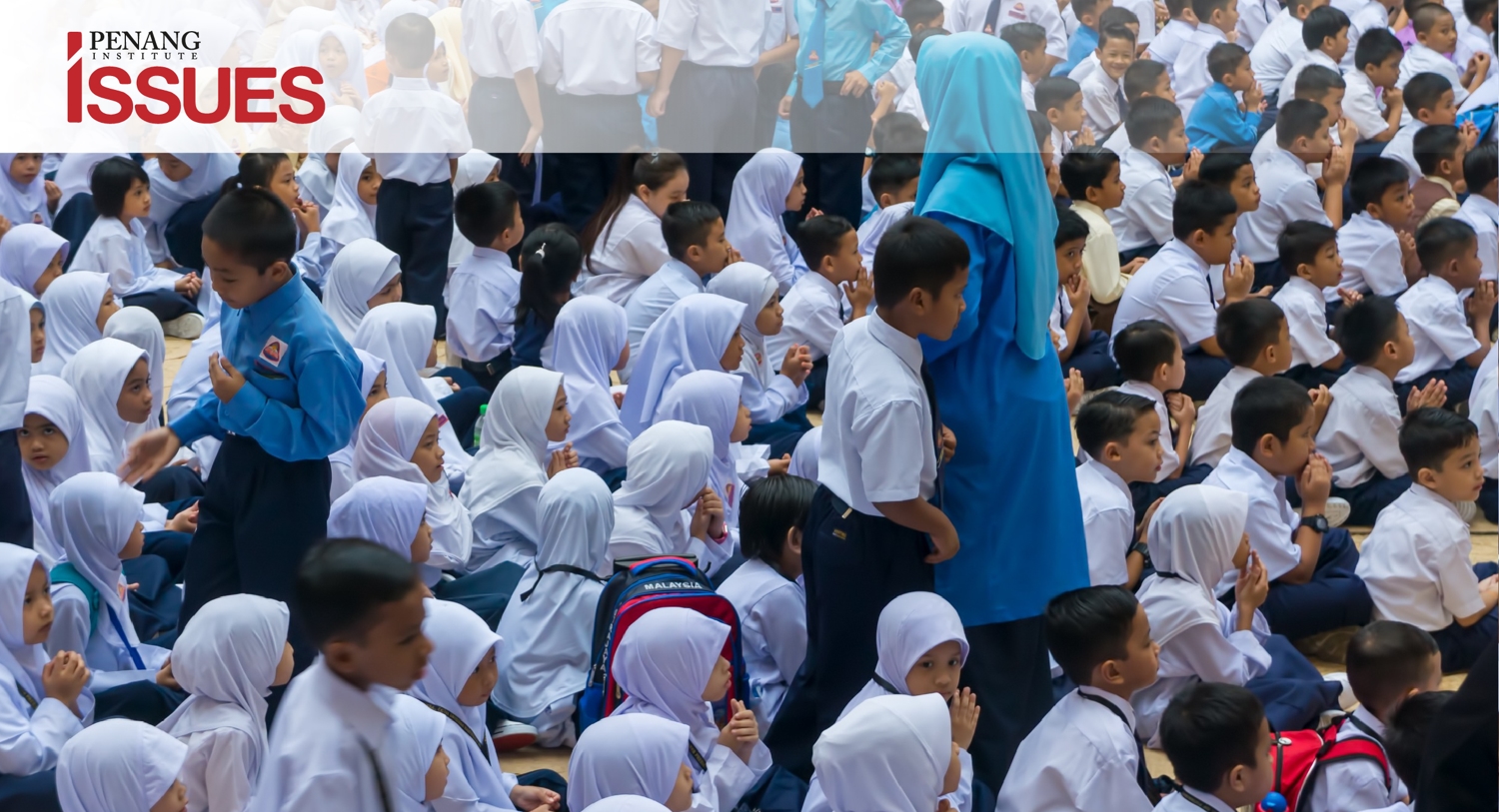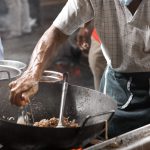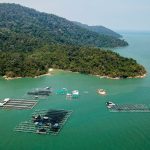
EXECUTIVE SUMMARY
- Due to political uncertainties in the past two decades, Malaysia’s nation building project has more or less stagnated.
- The old model for nation-building—herein called National Unity 1.0—possessed three distinct characteristics: simplicity, a mechanistic approach and a literal interpretation. With its failure, there is now a need to go beyond the seasonal and one-off integration efforts that characterised it.
- The old primordialism framework in understanding the nation or ethnic identity as fixed, natural and ancient was always controversial, and considered highly unscientific. It has pointedly been challenged by the social constructivist view.
- To take the place of National Unity 1.0, an innovative paradigm titled National Unity 2.0 is introduced as an upgrade which employs bolder initiatives to both go from the top downwards and from the bottom upwards, which equips it to become deeply rooted in the community.
- The National Unity 2.0 framework is an ongoing process that tackles the challenges of national integration by accepting both moments of unity and moments of divergence, and fostering tolerance for differences in religion, tradition and way of life.
Introduction
In the ordinary life of Malaysians in the 1990s, the notion of national unity was relentlessly reiterated by RTM through nostalgic patriotic songs such as Sejahtera Malaysia, Jalur Gemilang, Setia, et cetera. It was also repeatedly emphasised by political leaders at various official functions, during festivals and in school textbooks. Unfortunately, this ideal of national unity was taken too much as a formality, and was soon sidelined or even forgotten in the face of political divisions and contestations over the past two decades—in fact ever since the Reformasi movement took off in 1998. In recent years, excessive politicisation of racial matters has further impeded the progress of interracial relations and affected the nation-building project.
This paper reflects on the historical evolution of the national unity concept and introduces an innovative paradigm. The preceding model will be referred to as National Unity 1.0, while the innovative paradigm is named National Unity 2.0. We delve into the experiences and narratives associated with National Unity 1.0. Additionally, drawing upon the most recent policy documents, we outline and elaborate on the National Unity 2.0 paradigm, and provide pertinent policy suggestions.
National Unity 1.0
There were three periods in National Unity 1.0. At independence, our country’s founding fathers were major facilitators for consociationalism, where each ethnic group was represented by its own political party within a ruling coalition of parties. In this early period, national unity was mainly managed among political elites, with limited participation of people from the ground. This system broke down in 1969.
The second period of National Unity 1.0 started after the May 13 racial riots, with the implementation of concepts such as Rukun Negara and Rukun Tetangga. The Rukun Negara as Malaysia’s national philosophy was declared in response to the severe racial turmoil known as the 13 May riots. The Rukun Tetangga was launched in 1975 as a platform for unity programmes held by the government at neighbourhood level. A study on Rukun Tetangga in Penang showed that various types of activities were organised with high participation of different ethnic groups.[1] The Rukun Tetangga did provide an important channel for interracial face-to-face socialization. It also played the role of mediator whenever any inter-ethnic tension arose.
The third stage of National Unity 1.0 covered the period of rapid industrialisation of the Malaysian economy, with a formulation of Vision 2020. In this stage, national pride was built and national unity thickened with the economic growth achieved in the 1990s. But it was abruptly ruined by the Asian Financial Crisis. What followed instead were dynamics of division and conflict fuelled by the political elites.
In sum though, National Unity 1.0 possessed three distinct characteristics: it was based on simplicity, a mechanistic approach and a literal interpretation. Its simplicity was evident in its emphasis on physical proximity between the communities, such as the notion that sharing a meal would lead to unity. The mechanistic aspect involved treating humans like machines, as seen in initiatives like the Vision School plan, which assumed that unity could be achieved by studying together with a physical bridge connecting them. Lastly, it was interpreted in a literal sense; the term padu in the national language signifies a unity that had to be unwavering and devoid of any differences. Consequently, any deviation from this standard was viewed as a failure.[2]
Revisit Nation Building
As described by Benedict Anderson, a nation is an imagined community socially constructed through common culture, history and language. Be that as it may, the ideal of nationalism prevails with elements of utopianism and absolutism ‘regardless of the actual inequality and exploitation that may prevail’ and ‘pasts are restored, fellowships are imagined and futures dreamed’.[3]
This social constructivist view clearly challenges the old primordialism framework that understands national or ethnic identity as fixed, natural and ancient. Furthermore, the archaic paradigm of nation building as one necessarily based on race and bloodline is revealed as superficial. Within academe, diverse perspectives on the fluid nature of nationhood are more widely embraced. Any definite assumption on race and religion to underly a static view of history is highly contestable and indeterminate.
In addition to nation building, the concept of state building also serves as a relevant point of reference in the Malaysian context, and allows for greater flexibility beyond the confines of the nation-state’s rigid framework. Shifting towards state building would help dilute excessive reliance on race and religion rhetoric. The notion of a nation-state has, in most countries, precipitated internal conflicts or even civil wars. Instead of emphasising race and religion, state-building theory advocates enhancing the capacity of the state. State capacity pertains to the government’s strength in realising policy agendas, tax collection and law enforcement in order to provide public goods for citizens.
National Unity 2.0
National Unity 2.0 upgrades the national integration paradigm by a bold employment of a multi-pronged approach. According to the National Unity Action Plan 2021-2030 (Action Plan), many programmes and initiatives in the early phase of unity were seasonal and one-off, characterised by simplistic understanding, mechanistic practice and rigid expectation. Understood that way, the early phase of national unity remained relevant all the way till 2020.[4]
The new Action Plan redefines national unity through three distinct processes: unity, cohesion and reconciliation. Unity represents the ultimate goal; cohesion addresses social deficits, acknowledging moments when different races may agree to disagree through processes like bargaining, negotiation and mediation. Reconciliation involves creating persistent plans within society to establish an integration platform that flows from the top down, from the bottom up, and is deeply rooted in the community.[5] This Action Plan most accurately encapsulates National Unity 2.0, wherein unity is viewed as an ongoing process guided by a flexible framework. It aims to accept both moments of unity and moments of divergence, in the process fostering tolerance for differences in religion, tradition and way of life.
Changes in social and demographic trends provide a backdrop for National Unity 2.0. Firstly, interracial contact opportunities have expanded and broadened througt the years, either in daily environment or in social media. In the daily life of Malaysians, interracial encounter and collaboration are common, especially in the work place. This has deepened interaction, and brought about new social norms and values. While national politics may sometimes strain interracial relations, visible and invisible interactions have fundamentally transformed these, and given rise to new patterns and meanings on a day-to-day basis, in public spaces or at person-to-person levels.
Secondly, Malaysia is presently experiencing demographic aging and is projected to transition into an aged society within the next two decades. The country has been having a lower-than-replacement birth rate since a few years ago, and recorded in 2022 the lowest fertility rate in 50 years, with 1.6 children. Among all ethnic groups, the Chinese had the lowest fertility rate, with only 0.8 children.[6] This demographic shift will result in labour shortages, potentially impacting economic growth and putting great strain on retirement systems. The regional competition with emerging Asian countries has heightened the fight for talents. Brain drain or brain gain has become an important factor in the game. Given these challenges, it has become all the more meaningless for the Malaysian political discourse to continue being about inter-ethnic disputes.
National Unity 2.0 has the potential to transcend mere cohesion and reconciliation. It can be elevated towards achieving an even higher level of interracial interaction. This bottom-up approach should foster more genuine and sincere forms of interaction for rebuilding the nation.
Recommendations
1. Challenge stereotypes and unconscious biases
Malaysians grow up in a multiracial country but are plagued by racial prejudices and stereotypes. It is time to confront these chauvinisms honestly and professionally. In order to attain this, we would suggest the following:
- Recognise and address stereotypes and unconscious biases within each community.
- Produce video series on racial prejudices and micro-aggressions.
- Disseminate anti-bias education through diverse communication channels.
2. Promote racial reconciliation and healing
As stated in the National Unity Action Plan, a new process requires reconciliation. Such a process will improve and strengthen interracial relations. In order to attain this, we would suggest the following:
- Enforce preemptive measures to combat racism, such as providing training on diversity, equity and inclusion.
- Advocate for media literacy to empower social media users in mitigating racial biases through the self-monitoring of racial and religious sensitivities, and the employing of de-escalation techniques.
3. Inspire transethic solidarities through existing civil organisations and business communities
In Malaysia, there exists a robust layer of social capital networks sustained by the civil organisations registered with the Registry of Societies, albeit that some are organised along ethnic or religious lines. These organisations have consistently contributed across various facets of society, possessing abundant resources and expertise. In order to attain this, we would suggest the following:
- Promote the active involvement of civil organisations, such as Chinese associations, in enhancing interracial relations and allocating resources to benefit all races.
- Foster genuine business partnerships among diverse racial groups with new Ali-Baba relationships.
4. Establish a racial discrimination feedback mechanism
There is a need to establish an effective complaint mechanism to show commitment to the eradication of racial discrimination, and the promoting of a more inclusive society. In order to attain this, we suggest the following:
- Set clear guidelines on racial discrimination feedback which are aligned with relevant laws and policy.
- Establish a complaint platform managed by personnel with a deep understanding of cultural sensitivities.
- Ensure swift response, mediation and resolution to all complaints.
Conclusion
The foundation of national integration gains strength through both apparent and underlying levels of interaction, connection and networking. An event known as Keretapi Sarong, which was orchestrated by an NGO to commemorate Malaysia Day, remarkably resonated with individuals from all ethnic backgrounds.[7] This starkly contrasted with another protest event centred on parochial lines. The undercurrent of national unity is steadily gaining momentum. Consequently, it is now imperative to take a significant leap in our approach to national unity.
This necessitates an active role from the public, guided by clear directives from the government.
For list of references, kindly download the document to view.
Editor: Ooi Kee Beng
Editorial Team: Alexander Fernandez and Nur Fitriah (Designer)
Footnotes:
[1] Azeem Fazwan Ahmad Farouk & Mohd Zaini Abu Bakar. 2007. “State-induced Social Capital and Ethnic Integration: The Case of Rukun Tetangga in Penang, Malaysia”. Kajian Malaysia, 25(1): 41:60.
[2] Kementerian Perpaduan Negara. 2021. Pelan Tindakan Perpaduan Negara 2021-2030. Putrajaya: Kementerian Perpaduan Negara, pg.12.
[3] Anderson, Benedict R. O’G. 1991. Imagined Communities: Reflections on the Origin and Spread of Nationalism. London: Verso, pp.7 & 154.
[4] Kementerian Perpaduan Negara. 2021. Pelan Tindakan Perpaduan Negara 2021-2030. Putrajaya: Kementerian Perpaduan Negara, pg.12.
[5] Ibid. 15.
[6] Free Malaysia Today. 2023. “M’sian fertility rate in 2022 lowest in 50 years”. Free Malaysia Today, https://www.freemalaysiatoday.com/category/nation/2023/10/17/msian-fertility-rate-in-2022-lowest-in-50-years/ (accessed 18 October 2023).
[7] Wang, Ping. 2023. “Diversity-driven ‘keretapi sarong’ ploughs through conservatism: Don”. Malaysiakini,
https://www.malaysiakini.com/news/680053 (accessed 10 October 2023).
You might also like:
![Picking the Brains of GLC Heads: Policy Priorities for Penang in the Coming Decade]()
Picking the Brains of GLC Heads: Policy Priorities for Penang in the Coming Decade
![Cut the Queue: A Basket of Solutions for Malaysian Hospitals]()
Cut the Queue: A Basket of Solutions for Malaysian Hospitals
![Cashierless Technology at Grocery Stores: An Imminent Step towards Safer and Smarter Shopping in Pen...]()
Cashierless Technology at Grocery Stores: An Imminent Step towards Safer and Smarter Shopping in Pen...
![Making Food Hawking in Penang Sustainable]()
Making Food Hawking in Penang Sustainable
![Penang’s Aquaculture Industry Holds Great Economic Potential]()
Penang’s Aquaculture Industry Holds Great Economic Potential






